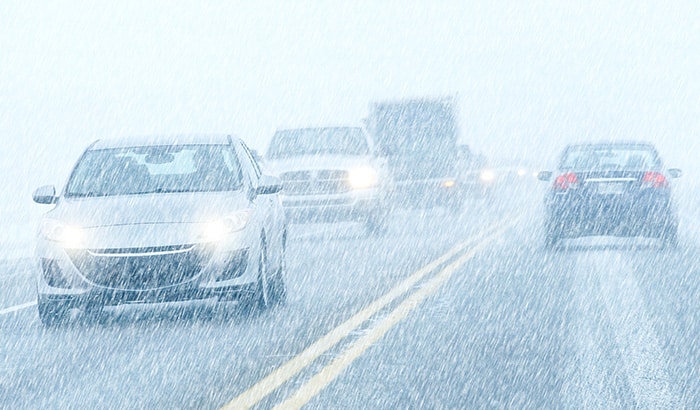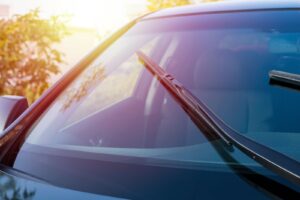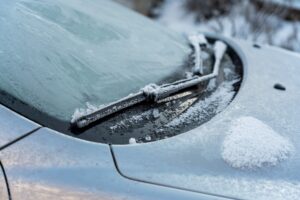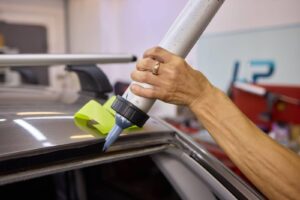As winter sets in, our roads transform into challenging icy stretches that test the skills of even experienced drivers. In this context, the role of advanced technological systems in our vehicles becomes increasingly vital for ensuring safe and secure navigation.
Advanced Driver-Assistance Systems (ADAS), the high-tech guardians designed to enhance driving safety, become more crucial than ever. However, their effectiveness on these frosty, treacherous paths hinges on one critical factor: proper calibration.
This article dives into the heart of ADAS calibration during the winter months, unraveling why it’s not only an added feature but a necessity for safe navigation through the season’s slippery challenges. We’ll explore ADAS’s transformative role in winter driving, the impacts of cold and ice on these sophisticated systems, and how regular calibration will be the difference between a close call and a safe journey home.
Prepare to step into the critical world of ADAS calibration, a key to ensuring safety on winter’s slippery roads. Here, advanced technology finely tunes the art of safe driving, offering precision and reliability in navigating through snow and ice.
Understanding ADAS and its role in winter driving
ADAS are a critical component of modern vehicle safety, especially during winter. These systems, including adaptive cruise control, lane-keeping assist, and automatic emergency braking, rely on sensors and cameras to function properly.
In winter, their importance magnifies as they assist in navigating the complexities of icy roads and reduced visibility. Features like Adaptive Cruise Control (ACC) adjust speed for safe following distances on slippery surfaces, while Lane Keeping Assist Systems (LKAS) need clear road markings, often obscured by snow, to function effectively.
Winter conditions pose significant challenges to ADAS functionality. Snow, ice, and slush will cover sensors and cameras, impairing their ability to detect essential road information. Reduced daylight and fog also affect these systems’ performance, making regular calibration crucial. Calibration ensures accurate sensor alignment and functionality, a necessity given the changing and harsh winter driving conditions.
Professional assistance is often required for thorough ADAS calibration, though drivers contribute by regularly cleaning sensors and cameras and staying alert to ADAS warning signals. It’s important to remember that while ADAS enhances safety, it doesn’t replace the need for careful driving, especially in adverse winter weather. Drivers should be aware of the limitations of these systems and maintain a vigilant driving approach.

The impact of winter conditions on ADAS functionality
Winter brings unique challenges for ADAS. Snow, ice, and slush obstruct sensors and cameras, impairing their ability to detect road markings, other vehicles, and obstacles. Fog and heavy snowfall further reduce visibility, challenging the ADAS to maintain its usual level of performance. These conditions necessitate a heightened focus on ensuring that ADAS is well-calibrated and functioning optimally.
Importance of regular ADAS calibration in winter
Regular calibration of ADAS is vital in winter. Calibration ensures that the sensors and cameras are correctly aligned and functioning accurately. Even minor misalignments lead to inaccurate readings, which may be particularly hazardous in slippery road conditions. Regular checks and calibration become even more critical as winter progresses, with the wear and tear of driving in harsh conditions potentially affecting the ADAS’s accuracy.
How to calibrate ADAS for winter conditions
Calibrating ADAS for winter conditions involves several steps. Firstly, ensure that all sensors and cameras are clean and free of ice, snow, or dirt. Even a small amount of residue impairs their functionality. Secondly, check the alignment of the sensors and cameras.
This requires specialized equipment and expertise, typically available at service centers or dealerships. Finally, test the systems in safe, controlled environments to ensure they respond accurately to winter road conditions.
The role of professional assistance in ADAS calibration
ADAS require meticulous care and maintenance, especially in challenging conditions like winter. While certain maintenance activities like cleaning sensors are within the realm of DIY for most drivers, the complete calibration of ADAS often necessitates professional intervention.
Professionals in automotive service centers equip themselves with specialized diagnostic tools and software to accurately assess and align the ADAS components. This precision is crucial for systems like adaptive cruise control and lane-keeping assist, which rely on finely tuned sensors and cameras to operate safely and effectively.
The process of professional ADAS calibration is comprehensive. It typically involves using advanced calibration equipment to align sensors and cameras to the manufacturer’s specifications. This process ensures that the various components of the ADAS communicate effectively and respond correctly to the vehicle’s environment.
Professionals also conduct thorough diagnostics to identify any underlying issues that might not be apparent to the average driver. This thorough examination is critical for ensuring that all elements of the ADAS are in optimal working condition, particularly in environments where road conditions rapidly change.
In addition to mechanical alignment and calibration, professionals also play a key role in updating the ADAS software. These updates are crucial for maintaining the system’s functionality, especially as manufacturers release patches and upgrades to improve performance and address known issues.
Software updates also include enhancements that make the ADAS more adaptable to different driving conditions, such as those encountered in winter. Regular software maintenance ensures that the system is not only mechanically sound but also technologically up-to-date, offering the best possible support to the driver in maintaining vehicle safety.
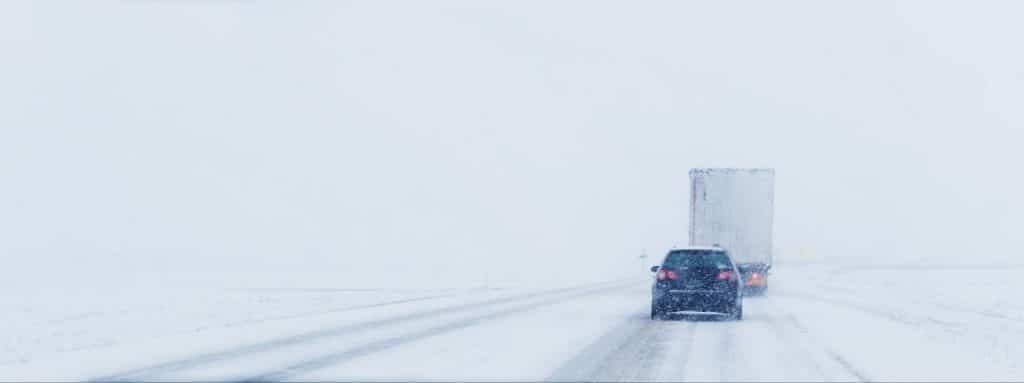
DIY tips for maintaining ADAS in winter
In addition to relying on professional calibration for their ADAS, drivers take proactive steps to maintain these systems during the winter months. One of the most fundamental tasks is regularly cleaning sensors and cameras. These components are integral to the proper functioning of ADAS features and easily become obstructed by winter elements such as snow, ice, and road salt.
Ensuring they are clean and clear not only maintains the system’s effectiveness but also enhances overall driving safety in challenging winter conditions. Drivers need to stay vigilant about any warning lights or messages related to ADAS on their vehicle’s dashboard.
These alerts notify the driver of potential system issues that might require professional attention.
Ignoring these signals decreases the functionality of the ADAS, which may be particularly hazardous in winter when the reliance on these systems often heightens.
Regularly checking and responding to these alerts ensures prompt addressing of any necessary calibrations or repairs, maintaining the system in optimal condition.
Familiarizing oneself with the ADAS manual is another crucial step. The manual often contains specific instructions and recommendations for maintaining and troubleshooting various ADAS features. Understanding the nuances of how each system operates and what unique maintenance each might require during winter equips drivers with the knowledge to better care for their vehicle’s safety features.
This knowledge also aids in identifying when professional service is needed and in discussing specific ADAS-related issues with service professionals. Additionally, staying updated with manufacturer updates or recalls related to the vehicle’s ADAS further ensures that the systems are up to date and functioning as intended.
Understanding the limitations of ADAS in winter
While ADAS significantly enhances safety, it’s crucial to understand its limitations, especially in winter. These systems are aids, not replacements, for attentive driving. In adverse weather conditions, sensors may not perform as well as in clear conditions. Drivers should remain vigilant and not over-rely on ADAS, especially on slippery roads where reaction times are crucial.
The future of ADAS in winter driving
The future of ADAS in winter driving looks promising. Continuous advancements in sensor technology and software algorithms enhance these systems’ robustness in challenging conditions. Additionally, integrating vehicle-to-vehicle communication and smart infrastructure is expected to enhance the safety and efficiency of winter driving further.
As we navigate the icy gauntlet of winter roads, the clear importance of well-calibrated ADAS emerges. When properly maintained and calibrated, these technological marvels act as crucial allies in the battle against slippery surfaces and diminished visibility. They are sophisticated features in our vehicles while being lifelines that enhance safety and provide peace of mind during the most challenging driving conditions.
It is vital to remember that these systems are aides, not substitutes, for vigilant driving. The responsibility of safe driving in winter still squarely rests on our shoulders. ADAS offers support, but they operate best when complemented by our attentive and cautious driving habits.
Looking ahead, the future of ADAS in winter driving is bright with promise. As technology advances, these systems will become even more adept at tackling the challenges of icy roads and poor visibility. Integrating smarter, more sensitive sensors and the evolution of vehicle-to-vehicle communication herald a new era of safety and efficiency in winter driving.
As the snow falls and the roads ice over, let us not forget the importance of regular ADAS calibration. It’s an essential step in preparing our vehicles for winter’s tests. Ensuring our ADAS are in top condition, we equip ourselves with the best tools to stay safe on slippery roads. This winter, let’s embrace the cold with confidence, knowing our vehicles are as prepared as we are for whatever lies on the road ahead.
Trust Utah Mobile Auto Glass with all your windshield concerns!
Our experienced team is ready to address all your winter windshield needs with expertise. We specialize in handling the challenges of cold weather, providing top-quality care for your vehicle. Whether it’s repairing damage caused by cold or offering complete windshield replacements, we do it all with a mix of professionalism and friendliness.
Concerned about dealing with winter insurance claims for windshield problems? Don’t worry. We will collaborate with your insurance provider to secure complimentary or low-cost services for you. Our mobile service extends up to 25 miles from Sandy, serving areas including Lehi, Bountiful, Salt Lake City, and their surroundings.
For exceptional winter windshield services, reach out to Utah Mobile Auto Glass. Contact Utah Mobile Auto Glass today to ensure your vehicle remains safe and your vision clear throughout the winter.
toto slot

